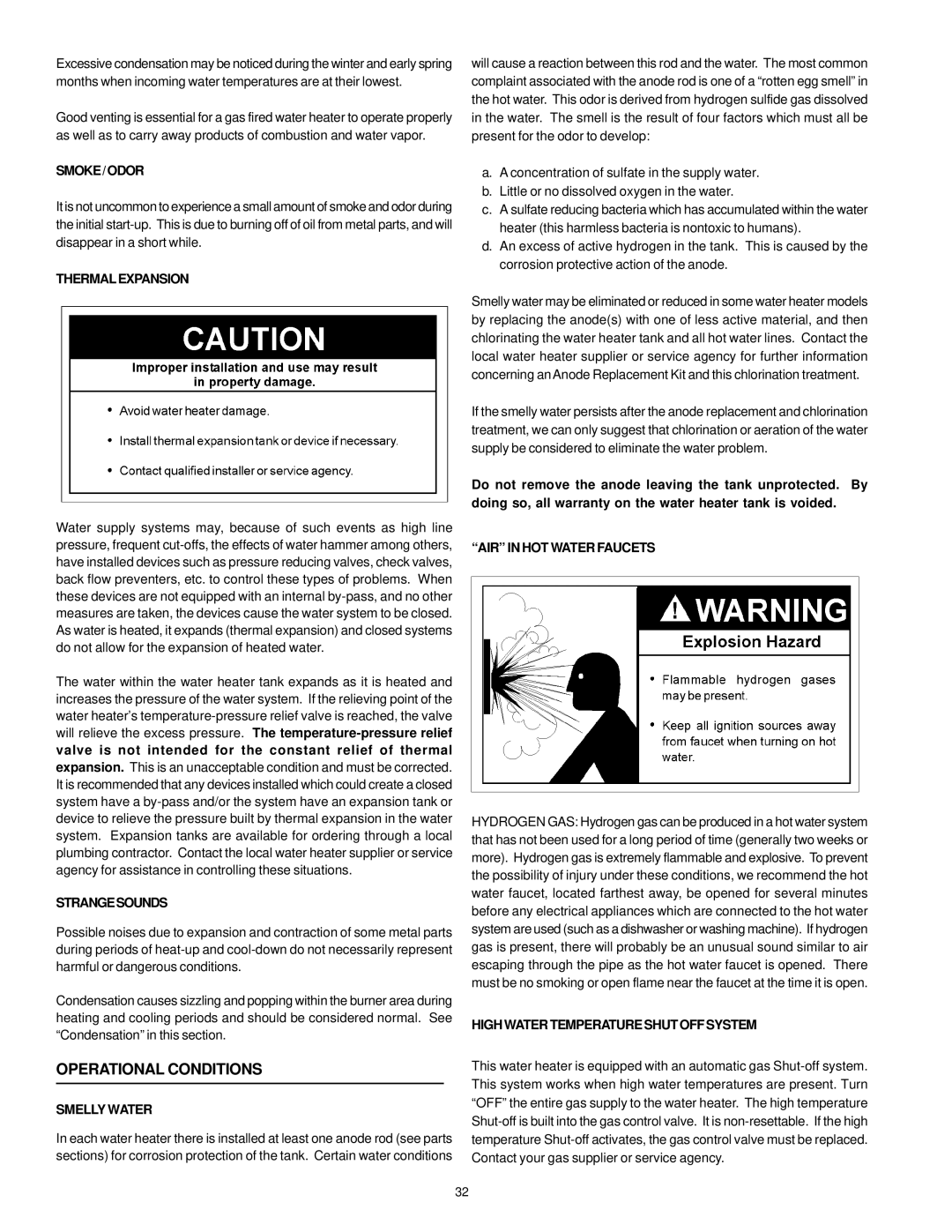Green Choice specifications
State Industries Green Choice is a remarkable initiative designed to promote energy efficiency and environmentally-friendly practices in the manufacturing sector. The program focuses on providing high-efficiency appliances and heating systems that are not only cost-effective but also reduce environmental impact. With a growing concern about climate change, State Industries aims to address these issues through innovations in technology and sustainable practices.One of the main features of the Green Choice initiative is its commitment to producing ENERGY STAR® certified products. These appliances meet strict energy efficiency guidelines set by the U.S. Environmental Protection Agency, helping consumers save money on energy bills while also decreasing their carbon footprint. By prioritizing energy efficiency, State Industries ensures that their products move the industry toward a more sustainable future.
Incorporating advanced technologies is central to the Green Choice initiative. The use of state-of-the-art insulation materials minimizes heat loss, while high-efficiency burners and heat exchangers maximize energy utilization in heating systems. These technological innovations lead to significant reductions in energy consumption, translating to both financial savings for consumers and reduced greenhouse gas emissions.
Another characteristic of Green Choice is the emphasis on using sustainable materials in manufacturing. State Industries strives to source materials that are either recyclable or derived from renewable resources. This commitment not only supports the economy but also minimizes waste and environmental degradation associated with traditional manufacturing processes.
Furthermore, State Industries prioritizes lifecycle analysis in the development of its products. This approach evaluates the environmental impact of a product from its conception through production, usage, and eventual disposal. By understanding the full lifecycle, State Industries can make informed decisions that enhance the sustainability of its offerings.
Consumer education is also a vital component of the Green Choice program. State Industries actively engages with customers to raise awareness about energy-efficient practices and the benefits of choosing sustainable products. By empowering consumers with knowledge, the initiative encourages responsible energy use and promotes a culture of sustainability.
In conclusion, State Industries Green Choice represents a holistic approach to manufacturing, focusing on energy efficiency, technological innovation, sustainable materials, and consumer engagement. This initiative not only helps to combat environmental issues but also fosters a market for eco-friendly products, paving the way for a more sustainable future. State Industries is setting a positive example in the industry by prioritizing ecological responsibility while delivering high-quality, efficient solutions to consumers.

